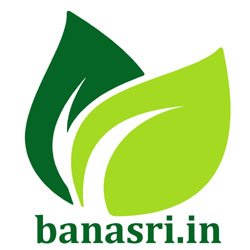
Festivals of Odisha: A Colorful Tapestry of Tradition and Devotion
Odisha’s festivals are a reflection of its rich cultural heritage, deep-rooted traditions, and vibrant community life. Each festival, with its unique customs and celebrations, offers a glimpse into the colorful and dynamic heritage of this eastern Indian state.
1. Ratha Yatra
Time of Festival
- Celebrated in June or July, during the Ashadha month of the Hindu calendar.
Specialty of the Festival
- Known as the Chariot Festival, dedicated to Lord Jagannath.
- Features the grand procession of deities Jagannath, Balabhadra, and Subhadra in massive chariots.
- Attracts millions of devotees from across the world.
Locality of the Festival
- Celebrated in Puri, Odisha.
Nature of the Festival
- Religious and cultural.
- Emphasis on devotion, tradition, and community participation.
- Features grand processions, chariot pulling, and religious rituals.
2. Durga Puja
Time of Festival
- Celebrated in September or October, during the Ashwin month of the Hindu calendar.
Specialty of the Festival
- Dedicated to Goddess Durga, celebrating her victory over the demon Mahishasura.
- Includes the installation of Durga idols in beautifully decorated pandals.
- Features rituals, cultural performances, and community feasts.
Locality of the Festival
- Celebrated across Odisha, with major events in Cuttack, Bhubaneswar, and Rourkela.
Nature of the Festival
- Religious and cultural.
- Emphasis on devotion, art, and community bonding.
- Features prayers, cultural performances, and festive gatherings.
3. Raja Parba
Time of Festival
- Celebrated in mid-June, marking the onset of the monsoon.
Specialty of the Festival
- A three-day festival celebrating womanhood and the fertility of the earth.
- Includes traditional games, swings, and special dishes like Poda Pitha.
- Women take a break from household work and enjoy various festivities.
Locality of the Festival
- Celebrated across Odisha, with significant enthusiasm in rural areas.
Nature of the Festival
- Cultural and traditional.
- Emphasis on womanhood, fertility, and nature’s renewal.
- Features traditional games, feasts, and community activities.
4. Makar Sankranti
Time of Festival
- Celebrated on January 14th.
Specialty of the Festival
- Marks the transition of the sun into the zodiac sign of Capricorn (Makara).
- Involves the preparation of special sweets made from sesame seeds and jaggery.
- Kite flying and community feasts are major activities.
Locality of the Festival
- Celebrated across Odisha, with major celebrations in regions like Bhubaneswar and Cuttack.
Nature of the Festival
- Cultural and agricultural.
- Emphasis on the harvest season, community bonding, and joy.
- Features kite flying, traditional rituals, and feasts.
5. Kartik Purnima
Time of Festival
- Celebrated in November, on the full moon day of the Kartik month.
Specialty of the Festival
- Commemorates the maritime heritage of Odisha, known as Boita Bandana.
- Involves the ritual of floating miniature boats made of banana bark or paper in water bodies.
- Traditional fairs and cultural performances are organized.
Locality of the Festival
- Celebrated across Odisha, with significant events in Cuttack and Bhubaneswar.
Nature of the Festival
- Cultural and historical.
- Emphasis on maritime traditions, community participation, and historical significance.
- Features boat floating rituals, fairs, and cultural events.
6. Maha Shivaratri
Time of Festival
- Celebrated in February or March.
Specialty of the Festival
- Dedicated to Lord Shiva, involving night-long vigils, fasting, and prayers.
- Temples are decorated, and devotees offer milk, fruits, and bel leaves to Shiva.
- Traditional music and dance performances are part of the celebrations.
Locality of the Festival
- Celebrated across Odisha, with major events at prominent Shiva temples like the Lingaraj Temple in Bhubaneswar.
Nature of the Festival
- Religious and spiritual.
- Emphasis on devotion, penance, and spiritual significance.
- Features prayers, rituals, and cultural performances.
7. Puri Beach Festival
Time of Festival
- Celebrated in November.
Specialty of the Festival
- A cultural festival showcasing the rich heritage of Odisha.
- Includes sand art displays, traditional dances, music performances, and craft exhibitions.
- Attracts tourists and artists from around the world.
Locality of the Festival
- Celebrated on the Puri Beach.
Nature of the Festival
- Cultural and artistic.
- Emphasis on art, culture, and tourism.
- Features performances, exhibitions, and community gatherings.
8. Nuakhai
Time of Festival
- Celebrated in August or September, following the harvest of new rice.
Specialty of the Festival
- A harvest festival where the first grains of the harvest are offered to the deities.
- Includes traditional dances, music, and feasts with the new harvest.
- Strengthens family and community bonds.
Locality of the Festival
- Predominantly celebrated in the western regions of Odisha, particularly in Sambalpur and surrounding areas.
Nature of the Festival
- Agricultural and cultural.
- Emphasis on gratitude, harvest, and community bonding.
- Features feasts, dances, music, and traditional rituals.
9. Chhau Festival
Time of Festival
- Celebrated in April.
Specialty of the Festival
- Known for the traditional Chhau dance, a blend of martial arts, dance, and folklore.
- Features elaborate costumes, masks, and performances based on mythological themes.
- Attracts performers and enthusiasts from across India.
Locality of the Festival
- Predominantly celebrated in the Mayurbhanj district.
Nature of the Festival
- Cultural and traditional.
- Emphasis on dance, folklore, and artistic expression.
- Features dance performances, music, and community participation.
10. Dola Purnima and Holi
Time of Festival
- Celebrated in March, coinciding with the full moon day of the Phalguna month.
Specialty of the Festival
- Dola Purnima involves the worship of Lord Jagannath, with processions of the deity’s idols on decorated palanquins.
- Holi is celebrated with the throwing of colors, music, and dance.
- Symbolizes the arrival of spring and the victory of good over evil.
Locality of the Festival
- Celebrated across Odisha, with major events in Puri and Bhubaneswar.
Nature of the Festival
- Religious and cultural.
- Emphasis on devotion, joy, and community celebration.
- Features processions, color throwing, music, and dances.
